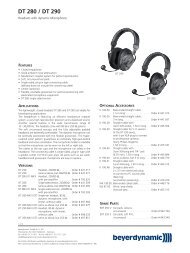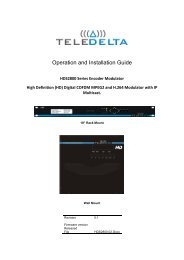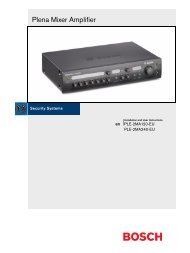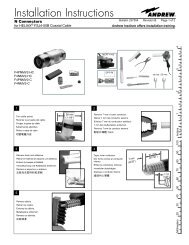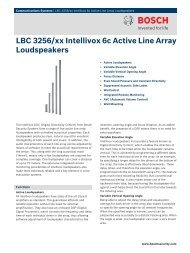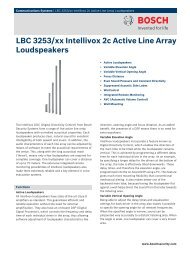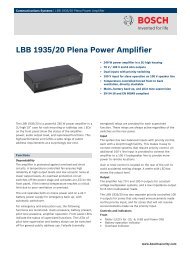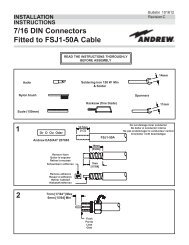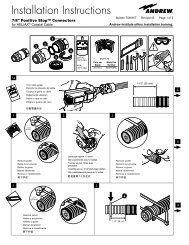Base Station Antenna Systems 2008 Product Selection Guide - AVW
Base Station Antenna Systems 2008 Product Selection Guide - AVW
Base Station Antenna Systems 2008 Product Selection Guide - AVW
- No tags were found...
You also want an ePaper? Increase the reach of your titles
YUMPU automatically turns print PDFs into web optimized ePapers that Google loves.
Applications/Engineering Notes<strong>Antenna</strong> FundamentalsThe coordinate system used for defining antenna radiationpatterns is the spherical coordinate system shown in Figure 4,while that used by surveyors and RF engineers is the altazimuthcoordinate system shown in Figure 5. Pattern data supplied byAndrew Corporation is in the form that is defined by the altazimuthcoordinate system.Most antennas are physically symmetrical about the x-y and x-zplanes, which means the antenna’s radiation characteristics areaptly described by only two radiation patterns. These principleplane patterns are the horizontal (azimuth) radiation pattern andthe vertical (elevation) radiation pattern. To measure the horizontalpattern, the probe moves in the x-y plane ( = 90° and varies).To measure the vertical pattern, the probe moves in the x-z plane( = 0° and varies). Figure 4 Spherical Coordinate SystemThe radiation pattern can be graphically represented in two ways.One is by a rectangular plot, where angular position is defined bythe x-axis and signal level by the y-axis. The second is a polar plot,where angular position is equivalent to the angular position on acircle—relative to a reference radial—and signal level is plottedrelative to the center of the circle at a distance proportional to thesignal level.The signal level can be plotted as a function of linear voltage orlinear power. In this case, the center of the polar plot is zero. If thelevels are absolute values, the outside value of the polar plot isgreater than one; for relative plots, the outside value is one. Thepattern can also be plotted as a function of absolute logarithmicpower level. In this case, the outside value of the polar plot is zero,and the center is not zero. Figure 5 Altazimuth Coordinate SystemExamples of rectangular and polar plots using the altazimuthcoordinate system are shown for an isotropic radiator anda half-wave dipole in Figures 6–9 (see following page). Figure6 shows the absolute voltage elevation patterns where the peakvalue for the isotropic radiator is 1.00 and the dipole is 1.28.Figure 7 shows the absolute power elevation patterns where thepeak value for the isotropic radiator is 1.00 and the dipole is1.64 = 1.282. Figure 8 shows the absolute power elevationpatterns in dBi where the peak value for the isotropic radiator is0.00 dBi = 10 log 10 (1.00) and the dipole is 2.15 dBi = 10 log 10(1.64). Figure 9 shows the relative power elevation patterns indB where the peak value for both is 0.00 dB. Andrew uses thepolar plot format, shown in Figure 9, for all Andrew base stationantennas.118Andrew Wireless Solutions www.andrew.com



